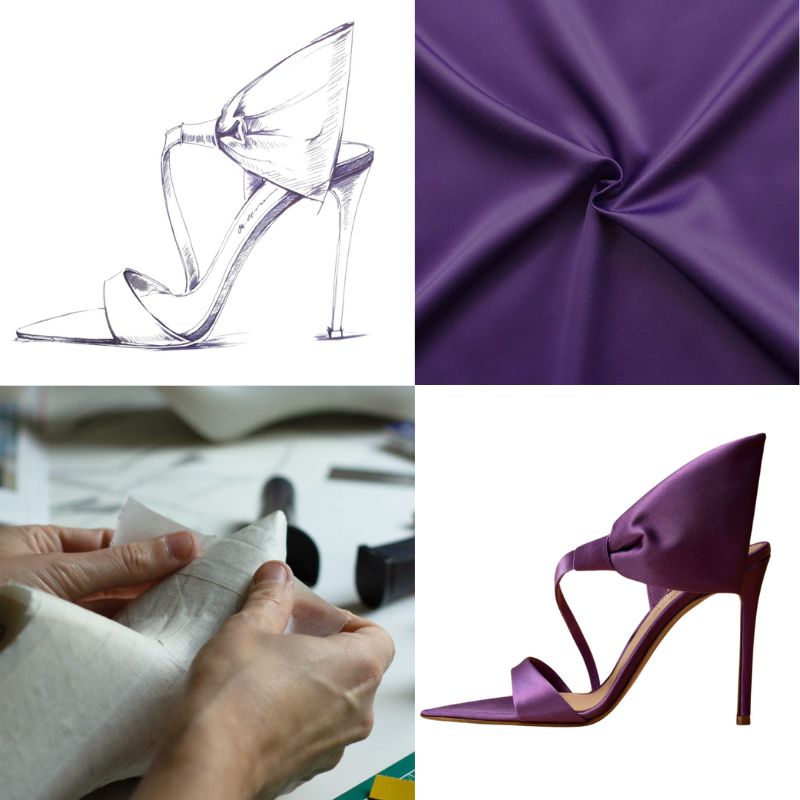Creating a custom pair of shoes is more than just a design process—it’s an intricate journey that takes a product from a mere idea to a finished pair of shoes.

1. Concept and Design: The Spark of Innovation
Every great pair of shoes begins with a concept. Whether it’s a new take on a classic design or an entirely innovative idea, the first step in creating custom footwear is to sketch the initial design. Designers must balance style with comfort and functionality.
What happens in this stage?
Brainstorming and Moodboarding: Designers gather inspiration, define the desired aesthetic, and collect materials, textures, and color palettes.
Sketching: A basic sketch of the shoe’s appearance, shape, and structure is drawn, helping to visualize the design.
Technical Specifications: Detailed technical drawings are created, including measurements, stitching patterns, and materials.
2. Material Selection: Quality and Durability
Once the design is solidified, the next step is selecting the right materials. The materials chosen will define the overall look, feel, and durability of the shoes. Whether you’re creating leather sneakers, dress shoes, or boots, selecting high-quality materials is key to creating a product that’s both stylish and long-lasting.
What materials are typically selected?
Leather: For luxury and comfort, leather is often chosen for its flexibility and breathability.
Suede: A softer, more casual material that adds texture and elegance to footwear.
Synthetics: Eco-friendly or budget-friendly options that still provide durability and style.
Rubber or Leather Soles: Depending on the design, soles are chosen for comfort, flexibility, or style.
3. Pattern Making: Creating the Blueprint
Once the materials are selected, the next step is to create the patterns. Patterns are the blueprints for cutting the various parts of the shoe, such as the upper, lining, and sole. Each pattern piece is carefully measured and adjusted to fit together perfectly when assembled.
4. Prototype Creation: Bringing the Design to Life
The prototype is where the design truly comes to life. This first sample helps designers, manufacturers, and clients assess the overall fit, style, and functionality of the shoe. It’s a critical step because it ensures that the design works in the real world and that any necessary adjustments can be made before full-scale production begins.
What happens in this stage?
Shoe Assembly: The upper, sole, and lining are sewn and assembled by hand or using machinery.
Fit Testing: The prototype is tested for comfort, durability, and style. Sometimes, minor tweaks are needed in the stitching or materials to achieve the perfect fit.
Feedback: Feedback from the client or internal team is gathered to make any final adjustments to the design or manufacturing process.
5. Production: Mass Manufacturing the Final Product
Once the prototype has been perfected and approved, the production process begins. This involves manufacturing multiple pairs of shoes, using the same pattern and materials as the prototype but on a larger scale. This stage is where the quality control process becomes crucial, ensuring each pair meets the same standards set by the original prototype.
Media Contact
Company Name: Chengdu Xinzi Rain Shoes CO., Ltd.
Email: Send Email
Country: China
Website: https://www.xingzirain.com/
